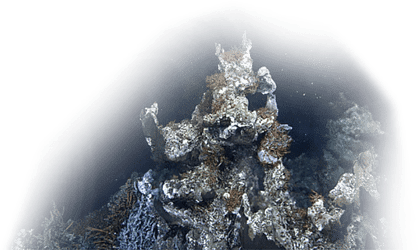We are back in the office after nearly 3 weeks at sea aboard the University of Washington’s R/V Thompson. The team followed the Operations Plan that was set out over the last 6 months and achieved most of the planned goals. The weather co-operated perfectly for dive operations, resulting in no weather downtime. The remotely operated vehicle (ROV) crew ensured that there was as little vehicle downtime as possible and was quick to resolve any problems subsea and on deck.
Here is a summary of what was accomplished on the NEPTUNE Canada June 6-26 Installation/Maintenance Expedition aboard the R/V Thompson with the Oceaneering Millennium ROV.
By the Numbers
- 20 days
- 19 dives
- 9 visiting scientists and engineers
- 8 ROV and navigation crew members
- 4 guest staff on the communications team
- 14 Ocean Networks Canada staff
- 10 connected instruments deployed and 4 recovered, plus several autonomous instruments deployed.
Endeavour Mothra
We completed 10 dives focussed on laying the Mothra-Midpoint cable. The first 3 were cut short due to vehicle hydraulic issues. The Oceaneering Team had only 4 weeks prior to shipment for design and manufacturing of the cable laying system. With input from Ocean Networks Canada, we devised a system that straps the cable spooling device under the ROV cage. Unfortunately, the cable lay was ultimately unsuccessful due to issues with mating the hydraulic connector between the ROV cage and the cable laying system. We retrieved the Mothra cable spool and cable laying system for further investigation on shore.
- 4 push core sediment samples.
- Conductivity-Temperature-Depth (CTD) rosette.
Endeavour North (a.k.a. RCM North)
We attempted to remediate last summer’s failure at the Endeavour North site. We tested the junction box (JB-08) with a spare and troubleshot connectivity at the node port. Replacing the junction box did not alleviate the failure and the node appears uncompromised, implying a failure in the cable system. Testing at the Node also suggested that the existing Mothra Node-Midpoint cable is also compromised.
Main Endeavour Field
Successful deployment of a 600 kHz Acoustic Doppler Current Profiler (ADCP), Benthic and Resistivity Sensors (BARS), Tempo-mini, temperature loggers, Remote Access water Sampler (RAS) and calibration with gas tight water samples for RAS and BARS.
- Detailed photogrammetric survey of Grotto for 3D reconstruction.
- Tubeworm sampling.
- CTD rosette.
Cascadia Basin (formerly ODP 1027)
- Replaced existing Seabird Microcat for a CTD with oxygen sensor.
- Deployed a 75 kHz Acoustic Doppler Current Profiler (ADCP).
- Deployed a low-frequency hydrophone.
- Deployed a Bottom Pressure Recorder (BPR) experiment including 3 pressure sensors.
Clayoquot Slope (formerly ODP 889)
- Recovered the Controlled-Source Electro-Magnetic (CSEM) experiment transmitter and receivers.
- Conducted a visual inspection of the SCIMPI (Simply Cabled Instrument Measuring Parameters Insitu) and SHRIMPI (SHoRt Instrument Modular Probe Installation) instruments, and recovered SHRIMPI.
- Visual inspection of gas venting site at Clayoquot Slope.
- Water sampling (CTD rosette) directly over gas venting site at Clayoquot Slope.
